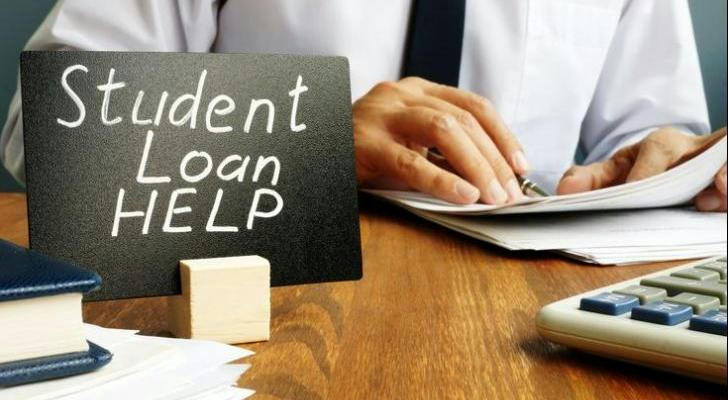Student Loan Survival Kit: Managing Payments After Graduation 🎓
In the United States, pursuing higher education often means taking on student loans. According to the Federal Reserve, Americans held over $1.6 trillion in student loan debt in 2023, with more than 43 million borrowers (Source: Federal Reserve, 2023). While loans make college possible, repayment is often the first major financial responsibility graduates face. This guide helps you understand how to manage your student loans after graduation—from repayment plans and relief options to smart strategies and scam prevention. Student debt doesn’t have to be overwhelming—you just need the right tools to take control.

1️⃣ Do Your Homework Early: Know What You Owe
Many graduates don’t realize the full scope of their student debt until their first bill arrives. The truth is, you should get organized before graduation:
✅ List each loan’s balance, interest rate, loan type (federal or private), repayment term, and servicer.
✅ Understand which loans begin accruing interest immediately and which are subsidized.
✅ Identify your loan servicers and create online accounts for easy access.
You can find federal loan details at studentaid.gov, while private loan information comes directly from your lender.
💡 Pro tip: Most federal loans offer a six-month grace period after graduation—but interest may still accrue. Use this time to plan ahead, not delay action.
2️⃣ Choose the Right Repayment Plan—Don’t Let the Default Choose You
If you don’t choose a plan, your loans will automatically go on the Standard Repayment Plan, which has fixed payments over 10 years. While it saves on interest, it may not fit every budget.
Here are your federal repayment options:
✅ Extended Repayment: Lower monthly payments over 20–25 years.
✅ Income-Driven Repayment (IDR): Plans like PAYE, REPAYE, and IBR base your monthly bill on your income and family size. Some borrowers pay as little as $0.
📊 In 2023, about one-third of borrowers were using an IDR plan (Source: Federal Student Aid, 2023).
📝 Review your income and long-term goals—then proactively apply for the plan that fits you best.

3️⃣ Can’t Pay Yet? You Still Have Options
Life happens—job loss, illness, or financial strain. The good news is that federal loans offer short-term relief options:
✅ Deferment: Pause payments if you’re in school, unemployed, or in military service. Interest won’t accrue on subsidized loans.
✅ Forbearance: Temporarily postpone payments for other hardships, but interest accrues on all loan types.
⚠️ These tools help in emergencies, but they increase your total cost over time. Use them wisely.
4️⃣ Loan Forgiveness: You Might Qualify Without Knowing It
Federal forgiveness programs reward borrowers who meet specific service or hardship criteria:
✅ Public Service Loan Forgiveness (PSLF): Forgives remaining balance after 120 payments while working in public or nonprofit sectors. Over 75,000 borrowers qualified in 2023 (Source: U.S. Department of Education, 2023).
✅ Teacher Loan Forgiveness: Up to $17,500 forgiven for teaching five years in low-income schools.
✅ Disability Discharge: Forgives loans for borrowers with total and permanent disabilities.
🗂️ These programs require careful documentation and follow-up. Don’t miss out due to paperwork delays—stay organized and proactive.
5️⃣ Smart Tools & Habits to Stay on Track
Managing your loans is easier with structure and strategy:
✅ Set up autopay for a 0.25% interest discount with most servicers.
✅ Use budgeting tools like Mint or YNAB to plan expenses.
✅ Try the avalanche or snowball methods:
Avalanche: Pay off highest-interest loans first.
Snowball: Pay off the smallest loans for motivation.
✅ Make small extra payments: Even $20–$50 extra each month saves interest over time.
✅ Check your loan status monthly—think of it as your personal “loan check-in day.”

6️⃣ Be Cautious: Avoid Scams and Refinance Wisely
🎯 If something sounds too good to be true, it probably is. Watch out for:
❌ Companies that charge fees to “erase” your federal loans.
❌ Promises of instant forgiveness or early payoff.
✅ Federal loan services are always free. Use only official platforms like studentaid.gov
Thinking of refinancing? It can help private loan borrowers or those with strong credit—but refinancing federal loans means you’ll lose access to:
Income-Driven Repayment
Public Service Loan Forgiveness
Deferment and Forbearance
📌 Always understand the trade-offs before signing any refinancing agreement.
🧭 Final Thoughts: Take Control and Build Your Financial Future
Student loans are a big step—but not a dead end. With a solid plan, consistent habits, and awareness of your options, your loans can be a manageable part of your financial journey.
✅ Explore forgiveness programs.
✅ Choose repayment plans wisely.
✅ Avoid scams and check in regularly.
This may be your first major debt—but it can also be your first big win on the path to financial independence.
Want this as a downloadable checklist or shareable guide? Just let me know!
